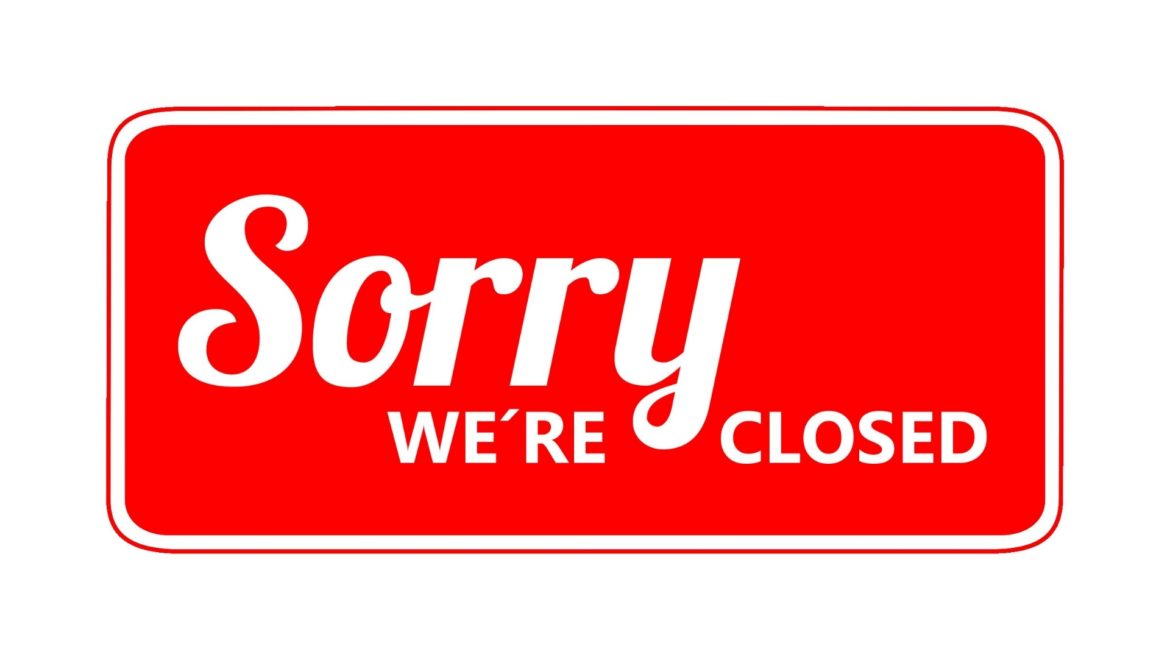Small business owners are traditionally more reluctant than most to consider bankruptcy. Understandably, their business is not just a source of income, but usually represents a considerable investment in personal time, money and resources.[1] As a result, small business owners are most likely to ignore the warning signs that their business is struggling. The economic repercussions of the Covid-19 pandemic are yet to be fully experienced by many businesses, and many already showing symptoms of financial distress. Before we discuss the warning signs, it is important to evaluate the general causes of financial distress.
GENERAL CAUSES OF SMALL BUSINESS DISTRESS
- Competition, either from the entry of new competitors into the market, or from aggressive cost-cutting from existing competitors. It may also mean that a business is being outspent in advertising, and consequently overlooked by consumers.
- Decline in demand for the product or services. An example would be the decrease in brick and mortar retail businesses due to the proliferation of mail order sales, such as Amazon.
- Increase in overhead or operating expenses, such as rent or the minimum wage payable to employees.
- Loss of a major client or account. As a small business, you don’t want to have all of your eggs in “one basket”, requiring you to rely on income from one major source to operate at a profit.
- Catastrophe, such as the loss of an owner/partner, or loss or destruction of company property from a natural disaster, or human event, such as arson, theft or embezzlement. The Covid-19 pandemic clearly fits in this category.
SIGNS OF DISTRESS
While the causes of distress may not be immediately detectable, the symptoms will manifest themselves fairly quickly, such as:
- Decline in revenue in comparison to previous months, and the same time period in previous years (especially in seasonal businesses)
- Loss of clients
- Reduction in phone calls, web traffic and foot traffic
- Exit of other competitors from the industry, either by attrition (such as retirement or relocation) or necessity (lack of income)
- Increases in operating expenses, such as rent, utilities, materials or supplies.
MILD WARNING SIGNS
The symptoms of distress don’t necessarily mean that the business is in trouble. There is always the possibility that adjustments can be made to increase revenue, either by raising prices, or reducing overhead (such as by layoffs). But it’s critical to be proactive. I always recommend that small business owners utilize the services of a CPA who can provide an independent assessment of the business finances.
- Inability to pay invoices and vendors on time
- Utilizing lines of credit and overdraft protection on a frequent basis
- Inability to draw a salary for extended periods
- Infusing the business with personal savings or funds
MODERATE WARNING SIGNS
If the business is not able to “weather the storm”, the mild warning signs of failure progress to the moderate stage. At this point, the owners need to make a realistic assessment of the profitability and viability of the company as an ongoing entity. You must determine whether closing the business or making a dramatic shift in its operations will be necessary.
- Debts have been turned over to collection agencies.
- Customers are complaining about the inability of the business to meet obligations or deadlines.
- Tax returns are not being filed on a timely basis.
- Essential expenses such as insurance, bonds, licenses, rent or utilities cannot be paid, or are cancelled.
- Lines of credit with banks, credit unions or vendors are revoked.
- Suppliers refuse to provide materials or supplies.
- Secured debts, such as for equipment or vehicles, cannot be paid when due and become delinquent.
- Obtaining loans secured by the company owner’s personal property, such as a residence, to pay the operating expenses of the business.
MAJOR WARNING SIGNS
If you witness these major warning signs, it is probably only a matter of time before the business will come to an end. Consulting a bankruptcy attorney at this point to eliminate your personal liability on any of the business debts would probably be recommended.
- Unpaid sales, payroll or other “trust taxes.”
- Unpaid income taxes and property taxes, with threats of levy.
- Lawsuits and/or garnishments.
- Repossession of business vehicles, equipment or fixtures.
- Foreclosure or eviction from business premises.
- Business deposit accounts are overdrawn and/or closed.
- The filing of mechanic’s or materialmen’s liens.
- Relying on payments/draws from new accounts to pay expenses/liens on former accounts.
IN CONCLUSION
A realistic appraisal of the business during the period of mild or moderate warning signs may not save the business, but it may prevent the escalation of debt, and potential loss of personal property. Many times, good-hearted attempts to keep a company afloat only generate additional liabilities and bigger problems – both for the business owners, their employees, clients/customers and creditors.
[1] A previous blog addressed the warning signs for consumers who may be headed down the road towards bankruptcy.


